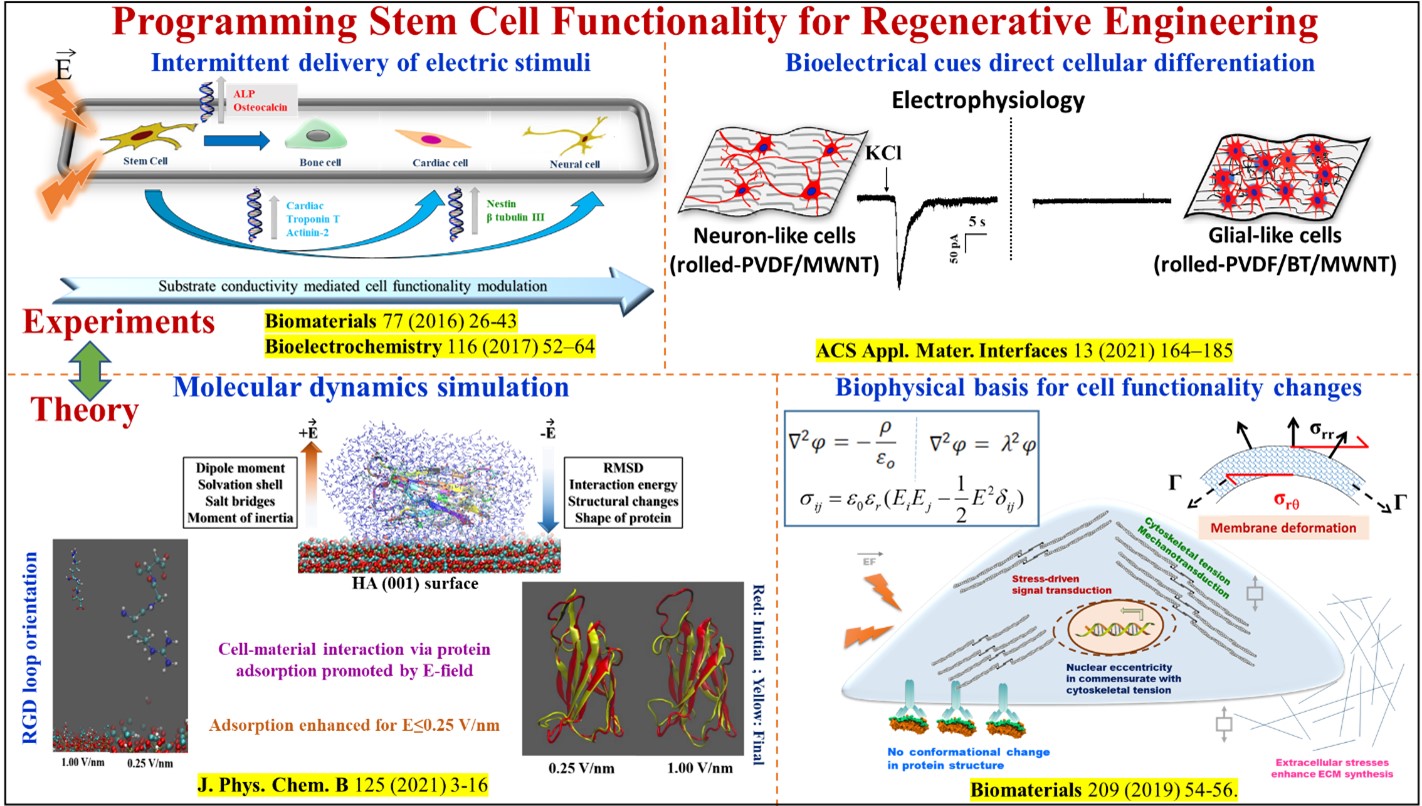Computational modeling to probe into Regenerative Bioelectronics for Neurodegenerative diseases
Faculty: Bikramjit Basu (MRC), Rishikesh Narayanan (MBU)
Basu’s research group has been working at the intersection of biomaterials design, cell biology and biophysical stimulation. Their research over last one decade has enabled us to understand the biophysical origin of tailored electrical stimuli-directed differentiation of bone marrow-derived stem cells into bone, cardiac, glial, neuron-like cells with clinically desired electrophysiological functionality. This has been validated on elastically stiff (HA-CaTiO3, HA-BaTiO3, etc.) and compliant biomaterials (doped PANI, PVDF-CNT-BaTiO3, etc.) with tunable electroactive properties (varying over three orders of magnitude) and in biomicrofluidic devices (2.5D culture) under dynamic culture conditions. He has convincingly shown that electrical stimuli can inhibit cell proliferation while promoting early cell differentiation in vitro[Biomaterials (2016); ACS Applied Materials & Interfaces (2021), Biotechnology and Bioengineering (2022)]. His research team provided insights into the impact of bioelectric stresses on cellular morphological changes and mechanotransduction using mathematical modeling. This body of work has profound significance on the bioengineering strategies for bone, neural and cardiovascular applications and have led to defining the ‘Regenerative Bioelectronics’ concept.
In extending this concept further, this collaborative project with Prof. Narayanan’s group will utilize the idea of adapting ‘Transmission (T)-line’ or cable-line approach to determine the time constant for the electrical analog of multicellular system, in an effort to validate the stimulation protocol used in experiments. In addition, electrophysiological and imaging measurements from the Basu laboratory have shown the presence of specific ionic currents with well-defined kinetics. The project will also mechanistically evaluate, using experimental and modeling techniques, the ionic basis as well as the role of calcium influx from the extracellular matrix and the intracellular stores in the emergence of these biophysical measurements.

References
- Asish Kumar Panda, Bikamjit Basu. Regenerative bioelectronics: A strategic roadmap for precision medicine, Biomaterials 301 (2023) 12271.
- Sufyan Ashhad and Rishikesh Narayanan, Quantitative interactions between the A-type K+ current and inositol trisphosphate receptors regulate intraneuronal Ca2+ waves and synaptic plasticity, The Journal of Physiology (London), 591 (7): 1645–1669, April 2013. (Methodological reference for cable modelling and calcium evolution)
